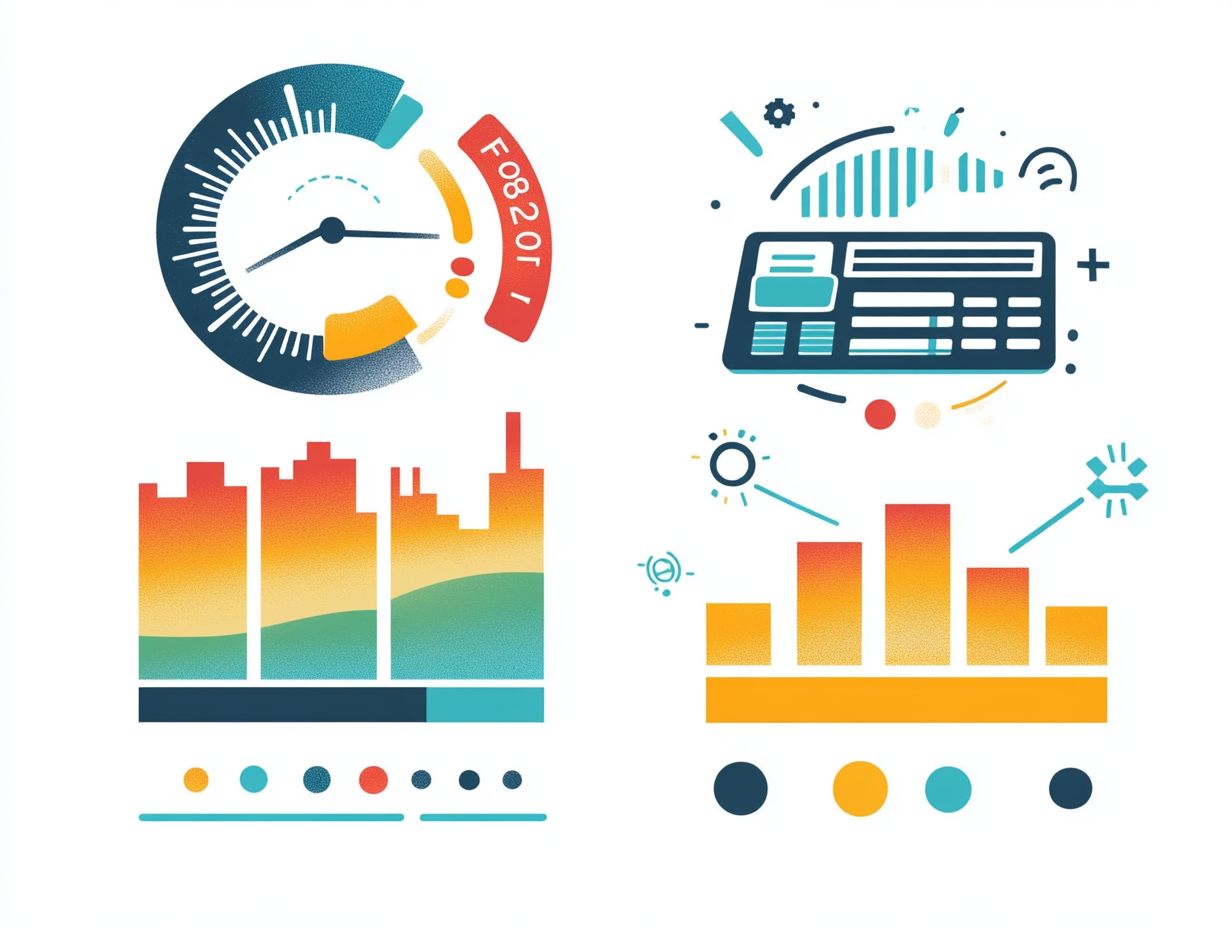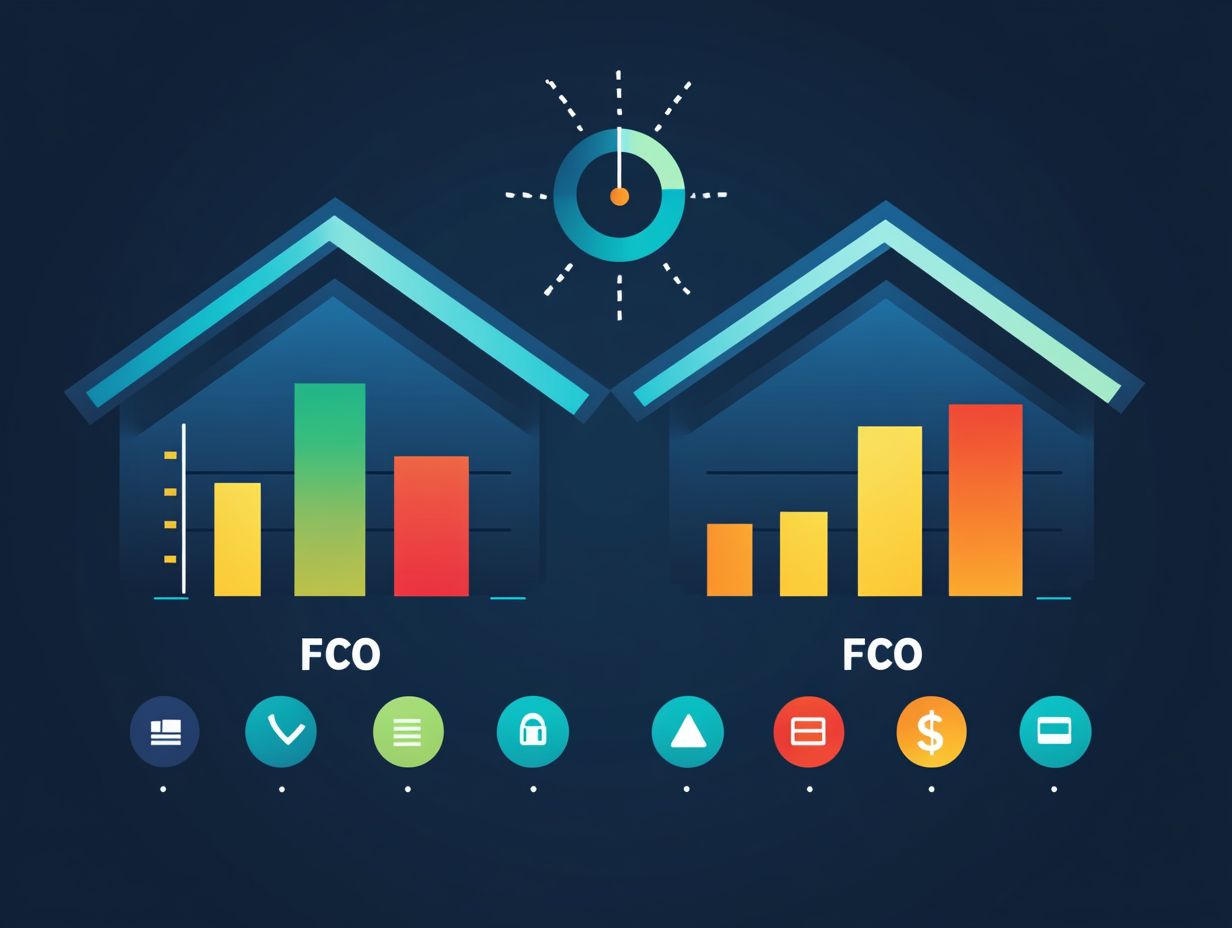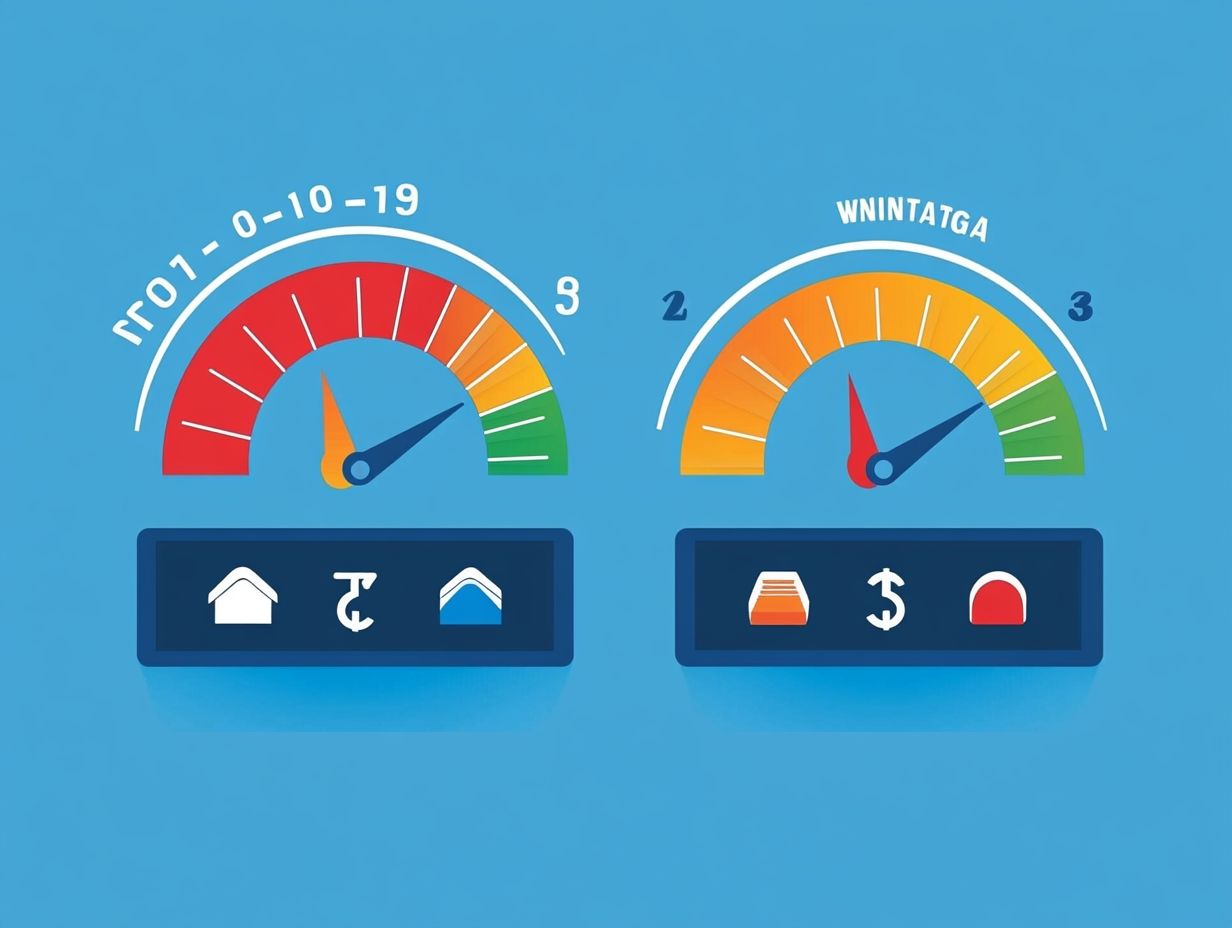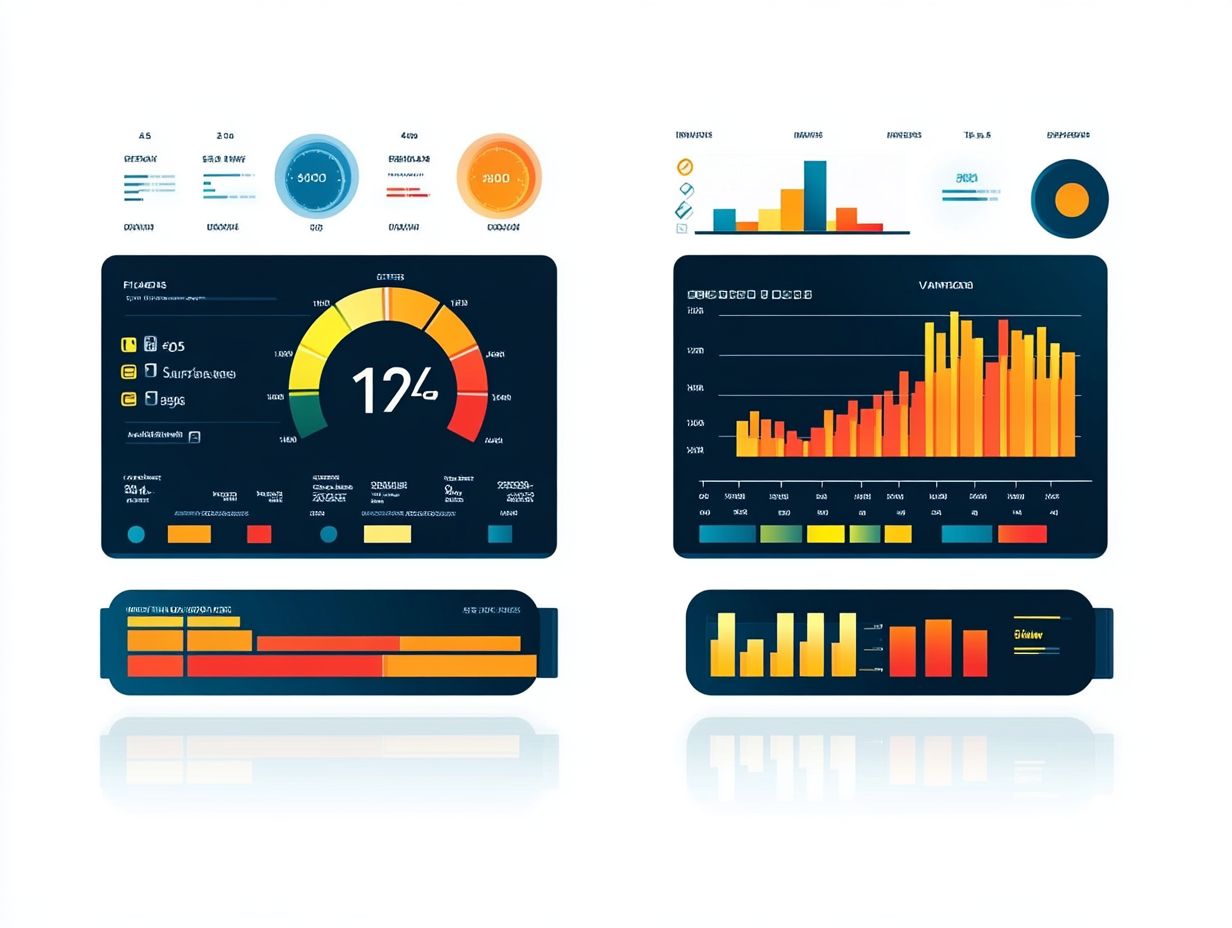Understanding the FICO Score vs. VantageScore
Your credit score is a pivotal element in your financial landscape, impacting everything from loan approvals to the interest rates you receive. It’s crucial that you understand these differences now! With two primary scoring models FICO and VantageScore it s vital for you to grasp their distinctions and how they influence your financial choices.
Ready to take control of your credit journey? Let s dive in! This article will guide you through the essentials of credit scores, delve into the history and methodologies of FICO and VantageScore, offer tips for checking your score, and present strategies to enhance it.
Contents
- Key Takeaways:
- What is a Credit Score?
- FICO Score: The Traditional Credit Score
- VantageScore: The Newer Alternative
- How to Check Your Credit Score
- Factors Affecting Your Credit Score
- Key Components and Their Impact
- Improving Your Credit Score
- Frequently Asked Questions
- What is the difference between FICO Score and VantageScore?
- Which credit scoring model is more commonly used, FICO Score or VantageScore?
- Can I check my FICO Score and VantageScore for free?
- Do FICO Score and VantageScore consider the same factors when calculating credit scores?
- Which credit scoring model should I pay more attention to, FICO Score or VantageScore?
- Can my FICO Score and VantageScore be the same?
Key Takeaways:

- FICO Score is the traditional credit score used by most lenders, while VantageScore is a newer alternative that is gaining popularity.
- Both FICO Score and VantageScore use similar factors to calculate your credit score but may weigh them differently.
- To improve your credit score, it’s important to understand the key components that affect it and take steps to address them, such as paying bills on time and reducing credit card debt.
What is a Credit Score?
A credit score serves as a numerical snapshot of your credit status, arising from an array of factors detailed in your credit report. This score is crucial as it encapsulates your risk level to lenders, influencing your eligibility for loans, credit cards, and mortgages.
Typically ranging from 300 to 850, grasping the nuances of credit scoring is vital for anyone seeking to cultivate good credit and uphold financial stability. Different scoring models, such as FICO and VantageScore, dictate how credit scores are assessed by major agencies like Experian, TransUnion, and Equifax.
Definition and Importance
The definition of a credit score encapsulates its pivotal role as a crucial indicator of your credit status, influencing lending and financial decisions. A solid credit score can significantly bolster your chances of securing favorable loan terms, including lower interest rates and better repayment options.
For lenders, evaluating this score is essential in assessing how risky you are to them. If your credit score is less than stellar, you may encounter higher interest rates or even outright rejections. This can severely limit your access to credit and loans, restricting opportunities for significant purchases like real estate or vehicles, ultimately impacting your overall financial future.
To navigate these challenges, credit monitoring services become invaluable resources. They allow you to track your scores, pinpoint areas for improvement, and maintain your financial stability.
FICO Score: The Traditional Credit Score
The FICO Score represents a traditional credit scoring model created by the Fair Isaac Corporation in 1989, and it has become a benchmark for assessing creditworthiness in the lending industry. This score ranges from 300 to 850 and is determined by five essential components: payment history, amounts owed, length of credit history, new credit, and types of credit used.
Lenders rely on the FICO Score to gauge a consumer’s risk status, making it vital for anyone in pursuit of loans or credit cards. By understanding how FICO Scores are calculated, you can take charge of your credit management and pave the way for favorable financial outcomes.
History and Calculation Method
The history of the FICO Score traces back to its creation by the Fair Isaac Corporation in 1989, evolving through several iterations designed to enhance predictive accuracy. Over the years, this scoring model has been refined to incorporate essential factors that reflect your credit status.
Key elements such as payment history, amounts owed, credit length, new credit inquiries, and the mix of credit types all play significant roles in shaping your scores. FICO scores can vary based on the specific algorithms and requirements of different lenders, making them a vital component in financial evaluations.
By grasping these nuances, you can navigate the complexities of credit assessments more effectively and improve your financial standing.
VantageScore: The Newer Alternative

VantageScore, introduced in 2006 to address the changing credit landscape, offers you a modern alternative to traditional scoring models like FICO. It s designed to deliver a more thorough assessment of your creditworthiness.
Developed collaboratively by the three major credit bureaus Experian, TransUnion, and Equifax this model enhances predictive accuracy while catering to the varied needs of both consumers and lenders.
With its unique scoring range, VantageScore provides you with deeper insights into how you use credit, making it a critical tool in deciding about your money.
Development and Differences from FICO
The development of VantageScore has ushered in notable differences from the traditional FICO model, especially in how it assesses your creditworthiness.
Both scoring systems aim to provide reliable information for lenders, but they utilize distinct calculation methodologies that can significantly affect your score. VantageScore casts a wider net by incorporating a broader range of data, including your recent credit activity, and boasts a flexible scoring range from 300 to 850. In contrast, FICO adheres to a more fixed range.
With VantageScore placing greater emphasis on credit utilization, it reflects your current financial health in a more dynamic manner, whereas FICO s methodology can occasionally overlook recent changes. This divergence holds important implications for you; for instance, your eligibility for loans or credit can shift dramatically based on which score is being referenced.
Lenders might also interpret these scores differently, potentially impacting their decisions regarding your loan applications.
How to Check Your Credit Score
Make checking your credit score a priority! It s vital for your financial health. It enables you to monitor your creditworthiness and gain insight into the details of your credit report.
You have several options for obtaining this information, whether directly from reputable credit reporting agencies like Experian, TransUnion, and Equifax, or through credit monitoring services that offer regular updates.
By making it a habit to check your score, you can stay informed about your financial habits, spot potential errors, and take proactive steps to enhance your credit standing.
Options and Resources Available
Explore various options to easily check your credit score and review your report! Among these, the annual credit report services stand out, offering you a free annual credit report from each of the three major credit bureaus. This allows you to keep a comprehensive eye on your credit history and understand its evolution.
Additionally, various credit monitoring websites deliver real-time updates and alerts about any significant changes in your credit accounts, enabling you to stay proactive against potential identity theft. Many financial institutions also provide complimentary credit score checks as part of their banking services, making it easy for you to monitor this important number.
By utilizing these tools, you can significantly enhance your awareness and understanding of your financial standing, ultimately helping you maintain a strong credit score.
Factors Affecting Your Credit Score
Several factors play a pivotal role in shaping your credit score, directly influencing your overall creditworthiness and financial behavior. Key elements include your payment history, credit utilization, the length of your credit history, the types of credit accounts you hold, and the frequency of hard inquiries (when lenders check your credit for loan applications).
Grasping these factors is essential for anyone looking to maintain or enhance their credit score, as they directly affect how lenders assess your financial risk. By managing these components effectively, you can strive towards achieving an excellent credit score and enhancing your financial prospects.
Key Components and Their Impact

The key components impacting your credit score include payment history, credit utilization (the amount of credit you use compared to your total limit), length of credit history, new credit inquiries, and types of credit accounts. Understanding these elements is essential for anyone looking to elevate their financial health.
Payment history plays a critical role in your overall score. Consistently paying your bills on time demonstrates reliability and enhances your creditworthiness. Credit utilization should ideally stay below 30% to signal responsible credit management.
The length of your credit history can benefit you, as lenders prefer established accounts that showcase a track record of responsible usage. Be mindful of the types and amounts of new credit inquiries; multiple requests can temporarily impact your credit scores.
To enhance these components, consider setting up automatic payments, reducing your debt levels, and maintaining a diverse mix of credit types to highlight your versatility in managing credit.
Improving Your Credit Score
Boosting your credit score opens the door to exciting financial opportunities. Several tailored strategies can help you achieve this.
Start by making timely payments. This fundamental step is essential for maintaining a strong credit profile. Keep a close eye on your credit utilization ratios; keeping them low can significantly enhance your score.
Minimize hard inquiries to prevent unnecessary dips in your credit standing. Regularly monitor your credit report for any errors that need addressing. By concentrating on these key areas, you can effectively enhance your credit score, positioning yourself favorably for loans and credit products. Act now to start seeing improvements in your credit score!
Strategies and Tips for Raising Your Score
To effectively raise your credit score, implementing proven strategies and tips can truly transform your financial profile.
A vital approach is to pay your bills on time. This directly influences your payment history, a key factor in credit scoring. Keeping your credit utilization below 30% of your available credit further enhances that score, making it more attractive to lenders.
It s prudent to limit the number of new credit inquiries, as each one may slightly lower your score. Regularly reviewing your credit reports enables you to catch any errors or fraudulent activity early on.
These strategies not only elevate your credit score but also lay the groundwork for more favorable loan terms and lower interest rates in the future.
Frequently Asked Questions
What is the difference between FICO Score and VantageScore?
FICO Score and VantageScore are both credit scoring models used by lenders to assess borrower creditworthiness. They use different algorithms and may weigh certain factors differently, resulting in different scores for the same individual.
Which credit scoring model is more commonly used, FICO Score or VantageScore?

FICO Score is the most widely used credit scoring model, utilized by 90% of top lenders in the US. VantageScore is gaining traction and is used by 10% of lenders.
Can I check my FICO Score and VantageScore for free?
Yes, you can check your FICO Score and VantageScore for free from various sources, including your credit card company, credit monitoring services, and some financial websites. Keep in mind that the scores may vary depending on the source.
Do FICO Score and VantageScore consider the same factors when calculating credit scores?
Both FICO Score and VantageScore consider similar factors, such as payment history, credit utilization, length of credit history, and types of credit used. However, they may prioritize certain factors differently.
Which credit scoring model should I pay more attention to, FICO Score or VantageScore?
Your credit health matters! Keep an eye on both your FICO Score and VantageScore.
When applying for a loan or credit card, focus on the scoring model the lender uses.
Can my FICO Score and VantageScore be the same?
Your FICO Score and VantageScore can be the same, but it’s not guaranteed.
They use different formulas to calculate scores, so slight variations are normal.
If your scores differ significantly, it’s crucial to understand the reasons behind it and address any issues.






